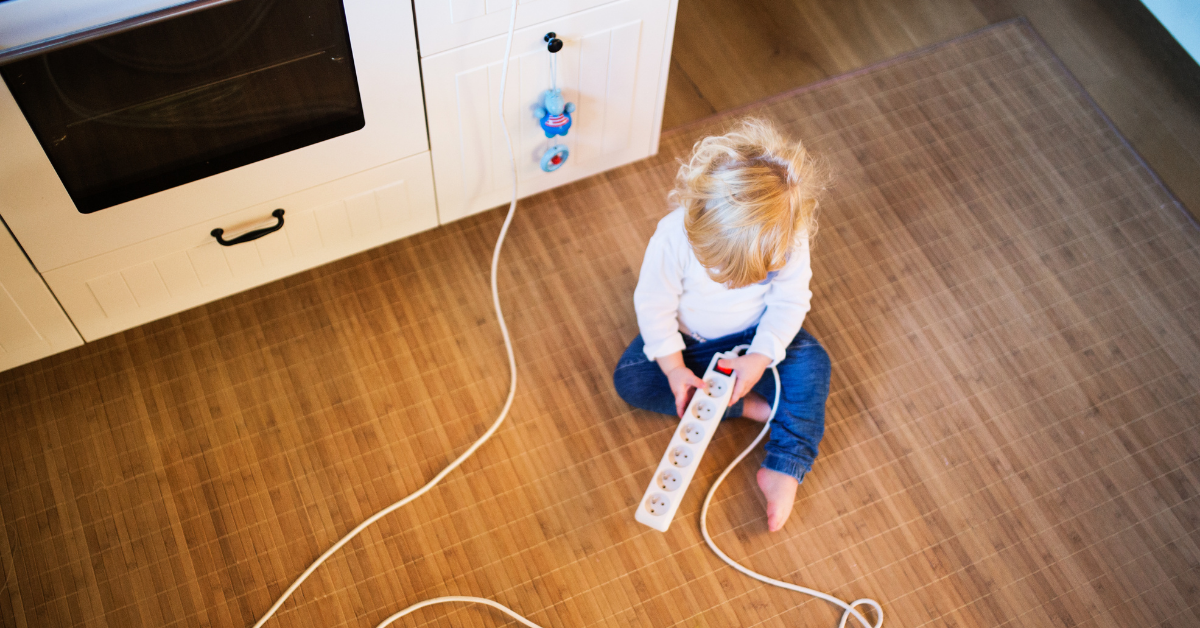Because we live in the warm comfort and security of our own home, it can be easy to forget that we still live among potential safety hazards. Fortunately, these seven home safety tips will help you assess and analyze the hidden dangers that may be lurking in your home, so you can take corrective action and live in complete comfort.
-
Don’t neglect safety housekeeping
Safety housekeeping refers to keeping minor safety hazards at bay by maintaining basic safety practices. The following are good safety housekeeping measures. First things first, don’t keep clutter in front of doors, stairways or steps, and make sure all cords are out of areas of travel to avoid trips. Keep things where they can be comfortably reached, or use a ladder or step-stool to safely retrieve them, and keep drawers, cabinets and cupboards closed when not in use. Your home probably has some potentially dangerous solvents and cleaners, so make sure chemicals or other hazardous materials are safely and properly stored. In the kitchen, keep appliances off or unplugged when not in use.
-
Maintain adequate home security
Perhaps one of the biggest safety hazards that can accompany homeownership are potential security threats. These can be fires, floods, loss of power, invasion, or worse. In order to avoid a potentially tragic occurrence, you should be sure to maintain adequate home security by having a security alarm and door locking system employed at your home. To maintain fire safety, always have smoke and carbon monoxide detectors in your home, and make sure to check the batteries and test them frequently.
It’s always beneficial to have an emergency action plan for your home, such as having an escape route, exit plan, and emergency meeting place. Be sure to communicate these plans to all family members that live in the house, and only share house codes or house keys with those who you really trust. When going away from your home for long periods of time, don’t share on social media when you’ll be away. For additional safety, consider adding porch cameras, motion detector lights, and cameras or video door locks.
-
Always remember home fire safety
Home fires can be extremely devastating if not life-threatening. While it’s difficult to live comfortably and conveniently while having eliminated all fire threats, there are steps you can take to ensure that high-risk home items are eliminated from potential risk. Never leave cooking unattended and keep stoves and counter surfaces free of clutter, grease, and especially flammable objects like hairspray, bug spray, or air freshener. Be sure to set a timer that will alert you when your cooking is complete since it is easy to forget. Additionally, wear tight clothes while cooking to ensure that nothing gets lit on fire. If you have a fireplace, candles, or other sources of open flame, never leave it unattended, and place it on a non-flammable surface clear from any potentially flammable items.
-
Eliminate electrical risks
Electricity, while incredibly convenient, can also pose a lot of safety risks if not adequately maintained. Use the following electrical safety tips to eliminate potential electrical hazards. Replace all damaged or frayed wires and cords, and throw out old or faulty appliances. Make sure to follow the correct procedures when replacing light bulbs. Never overcrowd your electrical outlets, use extension cords if necessary, and only buy electrical products evaluated by the nationally recognized laboratory (i.e. UL). The UL is OSHA-approved to perform product safety testing so look for products with this seal of approval. Additionally, all electrical systems should be repaired or installed by a certified professional.
-
Always practice proper food safety
Food safety isn’t always common sense and kitchen injury or food-borne illness is very real. In order to protect yourself and your family from potential food safety risks, follow the following safety tips. Make sure your kitchen is clean and adequately maintained, and be sure to avoid contaminating food by keeping raw meat and fish away from veggies. Thoroughly thaw frozen food before cooking, and ensure that food is cooked all the way by knowing safe temperatures and using a thermometer. To avoid spreading germs, keep your hands washed when handling raw meats, and to avoid injuries, carefully handle knives and other sharp cooking utensils.
-
Have the necessities
Your home should have all the typical emergency response items in an easy-to-access location. These items include:
- A first aid kit complete with band-aids, gauze, anti-bacterial wipes, eye patches, pain-reliever, etc.
- Medicines for common ailments such as upset stomach or colds
- Inhalers, if necessary
- Emergency numbers for contacts, doctors, hospitals, or poison control centers
- Anything else that may be necessary for the unique needs in your home
-
Encourage safe habits
Sure, it’s easy for someone to go around the house every so often and eliminate potential safety risks, but to maintain safety in your home, it starts by having open discussions and encouraging safe habits. Talk to your family members, visitors, and neighbors about safe habits and teach your children that safety is an important practice.

